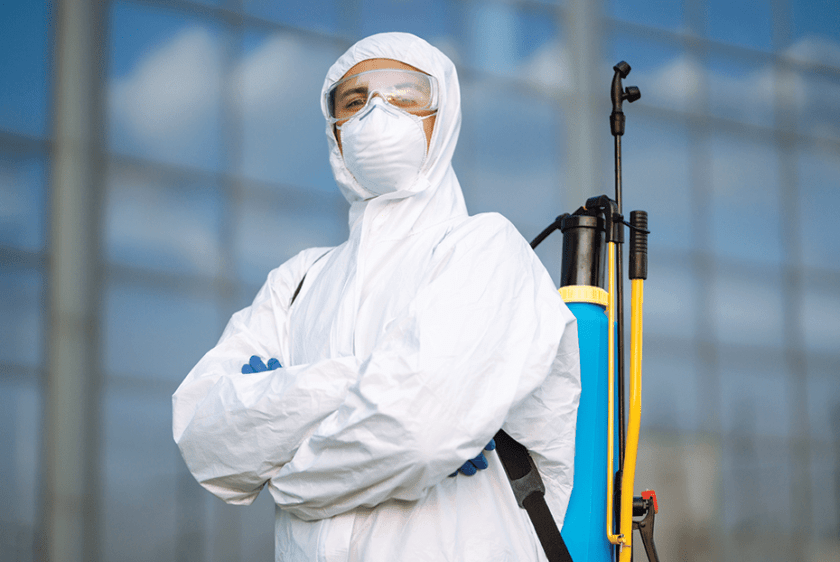Discovering Invasion and Treatment Approaches on the planet of Parasite Control
The landscape of pest control includes a myriad of obstacles, specifically as infestations of typical household bugs proceed to evolve. By integrating precautionary procedures with innovative management techniques, such as Integrated Insect Administration (IPM), home owners can much better safeguard their environments.

Common Home Pests
When it comes to managing our living areas, comprehending typical family parasites is crucial. These parasites not just interrupt our convenience but can additionally position health dangers and damage home. The most common household parasites include ants, cockroaches, rats, termites, and bed pests.
Ants, usually seen foraging in cooking areas, can pollute food and establish huge nests. Rodents, consisting of mice and rats, can cause architectural damage and bring diseases like hantavirus and salmonella.
Identifying the indications of these pests, such as droppings, nests, or attack marks, is vital for early treatment (Pest Control Lockhart). Proper hygiene practices, securing entrance factors, and preserving a clutter-free setting work preventative measures. By determining these common family pests and recognizing their habits, home owners can take positive actions to reduce problems, ensuring a much healthier living environment
Recognizing Bug Infestations
Pest invasions can rise rapidly, transforming a small inconvenience right into a significant issue otherwise addressed immediately. Understanding the nature of these infestations is vital for effective administration. Parasites can invade residential and industrial rooms for various reasons, including the search for food, sanctuary, or breeding grounds. Typical aspects contributing to invasions consist of inadequate hygiene, structural vulnerabilities, and seasonal adjustments that drive insects inside your home.
Identifying the kind of pest is important, as different species exhibit different actions and reproductive rates. Rats might develop nests in covert areas while insects like roaches grow in wet atmospheres. Early detection typically rests on identifying indicators such as droppings, chomp marks, or unusual sounds, which can suggest a problem prior to it comes to be serious.
Warm, moist climates can assist in the quick development of pest populaces, while adjustments in landscaping or building and construction can inadvertently produce helpful environments. An informed strategy to understanding these dynamics lays the foundation for reliable pest administration approaches in the future.
Treatment Techniques and Methods
Effective treatment techniques and strategies are essential for reducing bug problems and restoring a risk-free setting. A diverse technique is typically best, integrating chemical, organic, and mechanical approaches tailored to the specific insect and the intensity of the invasion.
Chemical therapies consist of making use of pesticides and herbicides, which can properly eliminate parasites. Correct application and adherence to safety and security standards are crucial to minimize risks to humans and non-target organisms. Integrated Bug Management (IPM) encourages the wise usage of chemicals as a last option, counting rather on surveillance and limit levels to identify intervention needs.
Organic control techniques involve presenting natural killers or parasites to reduce bug populations. This approach is significantly prominent, particularly in farming settings, as it advertises environmental sustainability.
Mechanical approaches, such as traps and obstacles, supply immediate alleviation from insects without presenting chemicals. Options include sticky catches for insects or physical obstacles for rodents.
Inevitably, the choice of therapy method must consider the details parasite, the environment, and prospective influence on human health and wellness and ecosystems. A well balanced mix of these techniques can properly manage invasions while advertising long-lasting parasite control solutions.
Precautionary Measures for House
Proactively resolving pest problems prior to they escalate is crucial for keeping a healthy home atmosphere (Pest Control Lockhart). Applying reliable preventive procedures can significantly decrease the probability of invasions, inevitably safeguarding both your residential property and health

Proper landscaping also plays an essential function in prevention. Keeping shrubs and trees cut away from your home lowers the opportunities of parasites locating their means inside your home. Make certain that water drainage systems are working effectively to prevent standing water, which can attract in insects and other insects.
Lastly, regular assessments are a good idea. Frequently checking for indicators of bug activity enables very early intervention. By taking on these safety nets, homeowners can develop an click here to read atmosphere that is less welcoming to insects, thereby boosting their overall lifestyle and minimizing the need for considerable insect control treatments.
Industrial Pest Control Methods
An extensive strategy to commercial parasite control is crucial for services intending to maintain a secure and sanitary setting. Efficient approaches include a combination of normal examinations, employee training, and the execution of Integrated Pest Administration (IPM) practices.
Routine examinations enable very early detection of bug task, permitting prompt treatment. Businesses must create a routine schedule for these evaluations, concentrating on risky locations such as kitchens, storeroom, and garbage disposal sites. Worker training is similarly crucial; staff must be enlightened on the indications of bug infestations home and the value of reporting them immediately.
Applying IPM methods assists minimize parasite issues sustainably. This includes environment alteration, such as sealing access points and decreasing mess, in addition to using all-natural deterrents before turning to chemical treatments.

Additionally, working together with a licensed pest control copyright makes sure access to expert understanding and innovative therapy choices. This partnership can result in tailored parasite control intends tailored to the specific requirements of the service, reducing risks and enhancing overall efficiency. Inevitably, a positive and educated method fosters a pest-free environment, guarding both public wellness and service credibility.
Conclusion
In verdict, efficient parasite control necessitates a thorough understanding of common family pests and their habits, paired with targeted treatment techniques. Applying preventive steps along with treatment view techniques such as Integrated Parasite Management and biological control improves the capacity to mitigate invasions.